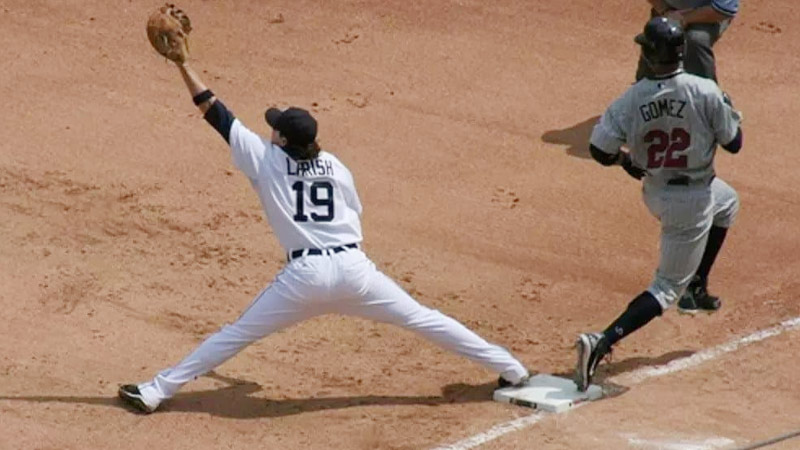Baseball, often referred to as “America’s Pastime,” has a unique set of rules that add to the charm and intrigue of the sport. Among these rules, the phrase “tie goes to the runner” stands out as a source of excitement and debate on the diamond.
For baseball enthusiasts and newcomers alike, understanding the concept behind this rule is essential in appreciating the dynamics of close plays on the bases.
In this blog post, we will explore the meaning and significance of “Tie goes to the runner” in baseball, shedding light on the scenarios where this rule comes into play and the implications it has on the game. Stay focused.
What Does “Tie Go To The Runner” Mean in Baseball?
“Tie goes to the runner” is a commonly used phrase in baseball that refers to a specific ruling on close plays at bases. In baseball, a base runner’s objective is to reach a base safely before the fielding team can tag them out with the ball.
When there is a close play at a base, and it appears that the runner and the fielder reach the base at the same time, the benefit of the doubt is given to the runner.
In other words, if the umpire cannot definitively determine whether the runner was tagged out before touching the base, the runner is considered safe and awarded the base.
How the Term “Tie Goes to the Runner” Started?

Source: baseballbible.net
The phrase “tie goes to the runner” has become ingrained in baseball’s lexicon, but its precise origins remain somewhat elusive. It is believed to have developed organically through informal umpire decisions and discussions on the field.
As baseball evolved and umpires faced numerous close plays at bases, they needed a way to make quick and fair rulings. The “tie goes to the runner” concept likely emerged as a pragmatic solution to resolve these situations without lengthy deliberation.
Favoring the Offense
At its core, the “tie goes to the runner” rule leans in favor of the offensive team, providing them with a slight advantage in scenarios where a play is too close to call. This inclination towards the offense adds an element of excitement to the game, as close plays can have a significant impact on the outcome.
For fans and players alike, witnessing these nail-biting moments on the diamond is part of the allure of baseball.
Encouraging Aggressive Base Running
One of the key reasons for upholding the “tie goes to the runner” tradition is its impact on encouraging aggressive base running.
Knowing that they might be awarded the base in close situations, runners are motivated to take risks and make daring moves to advance. This dynamic creates a thrilling atmosphere on the field and keeps spectators engaged in the strategic nuances of the game.
Preserving the Drama and Suspense
Close plays at bases are inherently dramatic, and the “tie goes to the runner” rule heightens the suspense during such moments. Whether it’s a close play at first base on a bunt or a daring attempt to steal home plate, the potential for a tie-breaking outcome keeps fans on the edge of their seats.
Preserving this drama and unpredictability is an essential part of maintaining the timeless appeal of baseball.
An Enduring Tradition
Over time, the phrase “tie goes to the runner” has transcended its original informal origins and has become a cherished tradition in baseball. It is woven into the fabric of the sport’s history and culture, celebrated by players, coaches, and fans alike.
Despite the occasional controversies or debates that arise from specific close calls, the spirit of this ruling remains an integral aspect of what makes baseball a timeless and beloved game.
When the “Tie Go To The Runner” Rule Is Applied?

Source: umpirebible.com
The “tie goes to the runner” rule is typically applied in the following scenarios:
First Base
When a batter hits the ball into play and sprints to first base, the fielding team will try to tag the runner with the ball before they reach the base. If the play is too close to definitively determine whether the runner or the ball arrived at the base first, the runner is considered safe.
Other Bases
The same principle applies to other bases, such as second base, third base, and home plate. Close plays on stolen base attempts, force plays, and tag plays will benefit the runner if there is uncertainty about the timing.
Penalties Against the “Tie Go To The Runner” Rule
The “tie goes to the runner” rule is an essential part of baseball’s tradition, aimed at favoring the offensive team and adding excitement to close plays on the bases.
While there are no direct penalties against the rule itself, there are certain implications and considerations related to umpire calls and replay reviews.
Umpire’s Judgment Calls
Umpires play a critical role in enforcing the rules and making real-time decisions on the field. When it comes to the “tie goes to the runner” rule, umpires must use their expertise and experience to determine whether the runner or the fielder reached the base first.
Their judgment calls are based on what they see during the play, and they must be impartial and unbiased in their assessments.
Finality of Umpire Calls
Once an umpire makes a ruling on a play involving the “tie goes to the runner” principle, the call is generally considered final. While players, coaches, and fans may express their disagreement with a call, there is no formal mechanism for challenging or overturning such decisions through replay reviews.
Controversial Calls and Challenges
In some instances, close plays that hinge on the “tie goes to the runner” concept can lead to controversy. If an umpire’s call is perceived as controversial or incorrect, there is limited recourse for teams to challenge the decision.
Under current rules, plays involving the “tie goes to the runner” rule are not subject to challenge through instant replay.
Acceptance of Umpire Decisions
In baseball, as with any sport, respecting the umpire’s authority and accepting their decisions is a fundamental aspect of fair play. Players, coaches, and fans must acknowledge that umpires are fallible and subject to human error.
While disagreements may arise, it is crucial to maintain sportsmanship and professionalism in response to umpire calls.
Controversies on the “Tie Go To The Runner” Concept
Check out the following section to know about the controversies on the concept mentioned above.
Umpire Calls and Consistency
One of the main points of contention surrounding the “tie goes to the runner” concept is the consistency of umpire calls. Different umpires may interpret close plays differently, leading to varying outcomes in similar situations.
This inconsistency has sparked debates about the need for standardized guidelines or training to ensure more uniform decisions.
Impact on Game Outcomes
In close and crucial moments of a game, the application of the “tie goes to the runner” rule can have a significant impact on the outcome. A close call in a critical situation can sway the momentum of the game and potentially influence the final result.
This aspect has raised discussions about the potential need for review systems, such as instant replay, to avoid game-altering calls.
The Role of Technology and Instant Replay
As technology has advanced, calls in many sports are subject to review using instant replay to ensure greater accuracy.
Some baseball fans, players, and coaches argue that the implementation of instant replay for close plays involving the “tie goes to the runner” rule could help minimize controversial calls and provide more objective decisions.
Preserving Tradition vs. Embracing Modernization
Baseball, steeped in tradition, has been cautious about embracing extensive technology-based interventions that might alter the essence of the game.
The debate over whether to retain the “tie goes to the runner” rule as a long-standing tradition or to integrate modern technology to improve accuracy highlights the balance between preserving the sport’s historical charm and embracing advancements in officiating.
FAQs
What does “Tie goes to the runner” mean in baseball?
“Tie goes to the runner” is a ruling in baseball that favors the offensive team in situations where there is a close play at a base.
If the umpire cannot definitively determine whether the runner was tagged out before touching the base and the play appears to be a tie, the runner is considered safe and awarded the base.
Is the “Tie goes to the runner” rule applied at all bases?
Yes, the principle of “tie goes to the runner” is applied to all bases on the diamond, including first base, second base, third base, and home plate. It is relevant in scenarios involving stolen base attempts, force plays, and tag plays.
What is the purpose of the “Tie goes to the runner” rule?
The “tie goes to the runner” rule is designed to favor the offensive team and promote aggressive base running. It adds an element of uncertainty and excitement to close plays, making the game more engaging for players and spectators alike.
Can the “Tie goes to the runner” rule be challenged through instant replay?
Under the current rules of baseball, plays where the “tie goes to the runner” rule is applied are not subject to challenge through instant replay. Umpires’ calls in these situations are generally considered final.
Are there any penalties against the “Tie goes to the runner” rule?
There are no direct penalties against the “tie goes to the runner” rule itself. Umpires make their best judgment calls, and players and coaches must accept their decisions, even if they are controversial or lead to disagreements.
Conclusion
The phrase “Tie goes to the runner” encapsulates one of the captivating aspects of baseball, where close plays at bases can swing the momentum of a game.
As a ruling that favors the offensive team, it encourages strategic base running and keeps players and fans on the edge of their seats during those pivotal moments on the diamond.
While the concept may lead to occasional controversies, it remains an integral part of baseball’s tradition and contributes to the unique excitement that makes this sport so beloved worldwide.
So, the next time you’re watching a game, keep an eye out for those close plays, and remember that in baseball, when it’s too close to call, the “tie goes to the runner.” Good luck.







